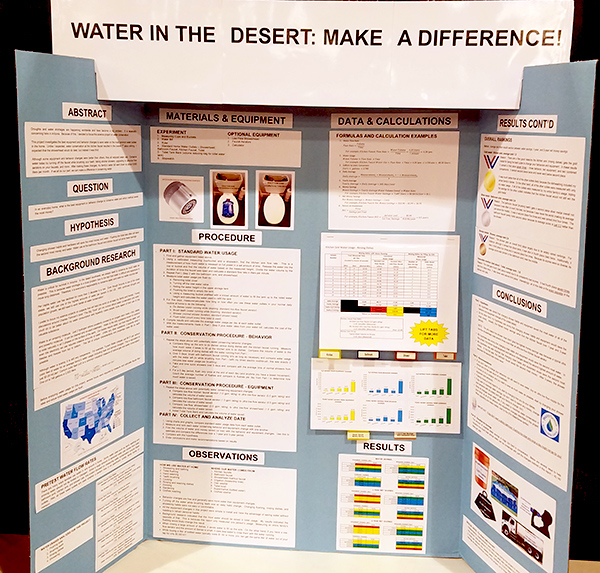—By Paul Plato
 On April 12, 2017, AHS, in cooperation with CAP, presented awards to deserving hydrology and water projects at the annual Arizona Science & Engineering Fair. This marks the 14th straight year AHS has teamed with CAP to award prizes at AzSEF, and we would like to thank Robert Frank of CH2MHill and Wayne Pudney, who helped me judge at this years’ event. The amount of prize money was increased this year to $700, to be distributed among deserving projects in the Senior, Junior, and Elementary Divisions.
On April 12, 2017, AHS, in cooperation with CAP, presented awards to deserving hydrology and water projects at the annual Arizona Science & Engineering Fair. This marks the 14th straight year AHS has teamed with CAP to award prizes at AzSEF, and we would like to thank Robert Frank of CH2MHill and Wayne Pudney, who helped me judge at this years’ event. The amount of prize money was increased this year to $700, to be distributed among deserving projects in the Senior, Junior, and Elementary Divisions.  AzSEF is a winner’s fair, so students must win at the local level to complete statewide. The number and quality of projects was better than in previous years, and AzSEF has done a remarkable job in making the fair successful.
AzSEF is a winner’s fair, so students must win at the local level to complete statewide. The number and quality of projects was better than in previous years, and AzSEF has done a remarkable job in making the fair successful.
Congratulations to all the winners; the projects were very inspiring. And congratulations to all the aspiring future scientists who I talked with this year. It was, as always, a rewarding and fun experience.
Senior Division
$200, 1st Place — Jeffrey Zou for S-ENEV-009: Phytoremediation of Chromium: A Study of Uptake of Maize, which evaluated the efficiency of chromium uptake in maize plants to evaluate their effectiveness for remediation. Jeffrey’s findings indicated that maize may be a viable option for phytoremediation of chromium-contaminated waters.

$100, 2nd Place — Jane Jansen, Shelby Lockhart, and Oliver Rodriguez for S-EAEV-003: Heavy Metal Water. This project involved evaluating water drainage and water quality associated with the Lead Queen Mine in Santa Cruz County. They worked with the U.S. Forest Service to collect samples and analyze the impacts of mine drainage on nearby surface water.
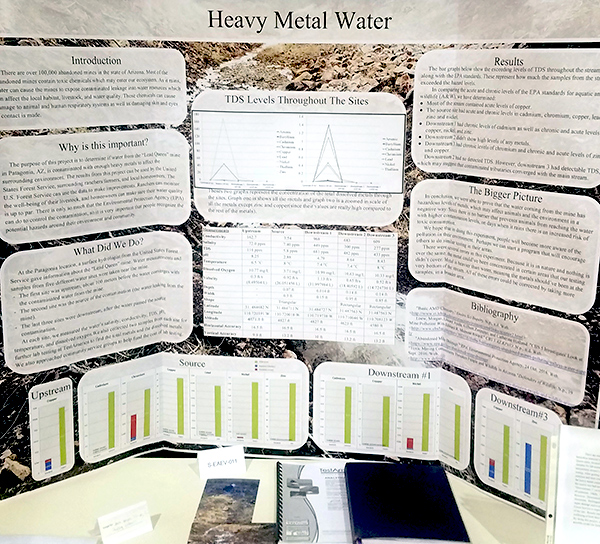
$50, 3rd Place — Mariam Bacha, Asma Aden, and Ruwaida Abshir for S-EAEV-021: Soil Contamination by Hydrocarbons. Their project involved evaluating feasible techniques for treating soils contaminated with oils.
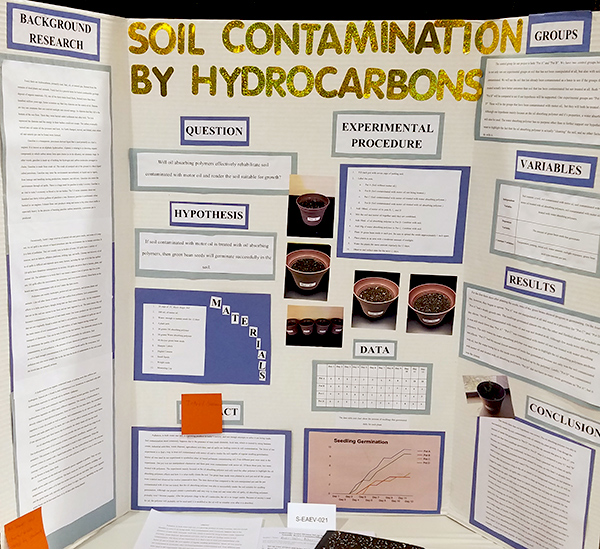
Junior High Division
$100, 1st Place — Maya Baker for J-EV-020: The Correlation between Cottonwood Tree Size and Hydraulic Gradient of the Water Table in Sabino Canyon. Maya’s project involved assessing hydraulic gradients along Sabino Creek near Tucson. It entailed constructing piezometers along the creek and measuring nearby Cottonwood trees.
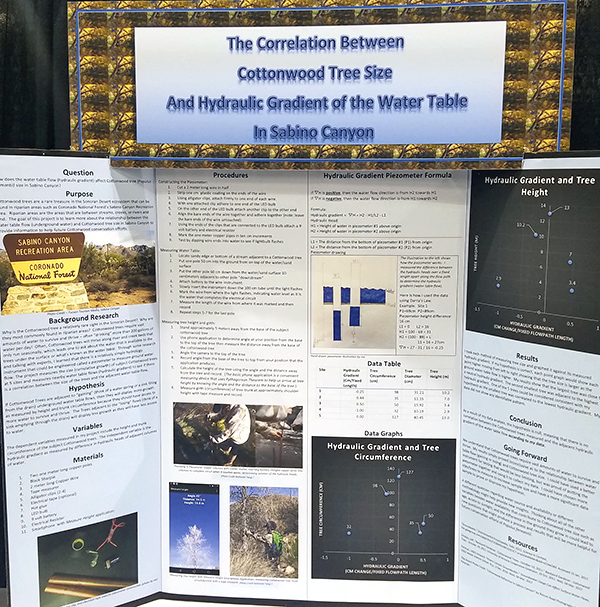
$50, 2nd Place — Amanda Branch and Kailee Pirch for J-EV-009: Healthy Ponds. The team evaluated the quality of water in ponds near Payson. They observed the growth of Daphnia Magna in the ponds and assessed the water quality and its impact.
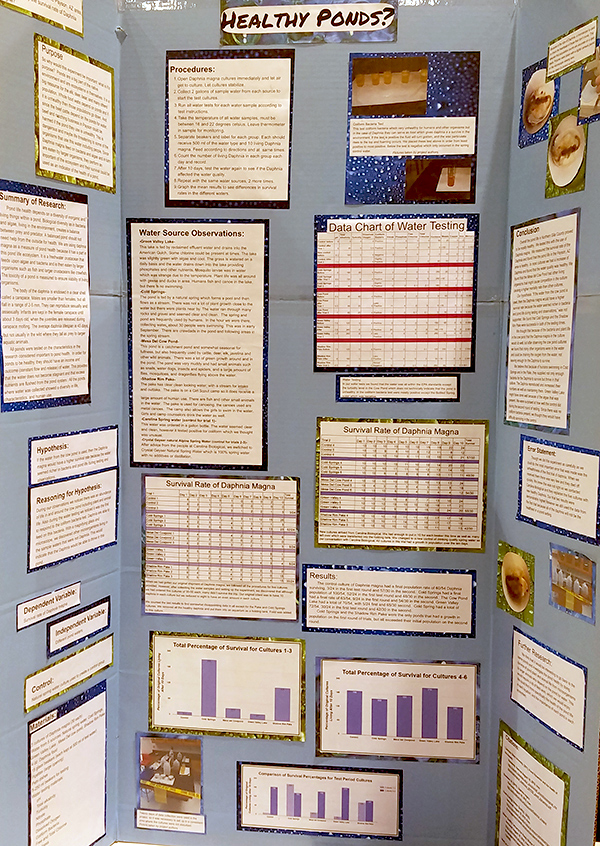
Certificate of Honorable Mention — Torin Clagett for A Cap on the C.A.P. Torin looked at the impact of covering the CAP canal on evaporation rates and water loss.
Elementary Division
$100, 1st Place — Joshua Shunk and Brian Kim for E-EA-012: Project Groundwater Collection, which examined the design and construction inexpensive wells for improving water access in the Third World. They looked at different perforation techniques and resulting turbidity of the water.
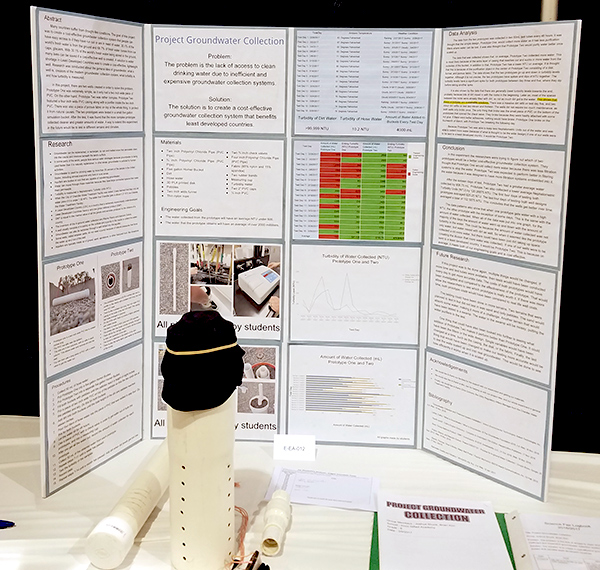
$50, 2nd Place — Jenna Copp for E-EV-035: Water Away, which looked at the amount of runoff from tilled versus untilled agricultural fields in the Yuma area.

$50, 2nd Place — Matthew Moore for E-EV-007: Does Soil pH Affect the Movement of Macro-Nutrients through the Soil Profile? Matthew looked at whether the movement of nutrients is impacted from differences in the pH of the soil.
Certificate of Honorable Mention — Caleb Razor for Water in the Desert: Make it Count! Caleb looked at conservation efforts using updated shower and bath fixtures.
